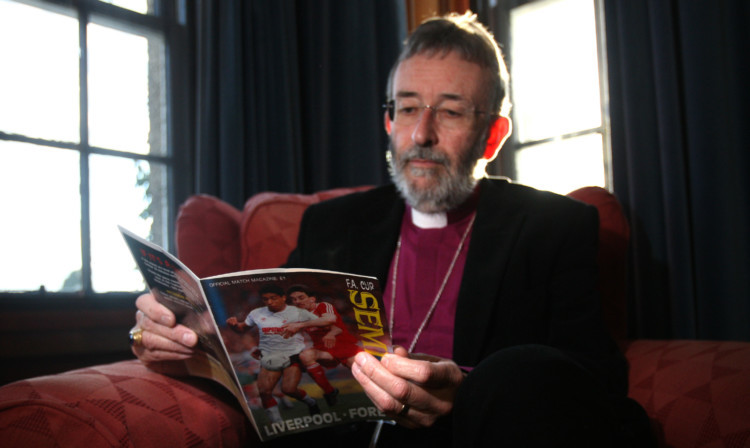A Tayside clergyman has told how watching the Hillsborough disaster unfold has left an indelible imprint on his life.
The Rt Rev Dr Nigel Peyton, Bishop of Brechin, admits he still finds it hard to talk about a tragedy which claimed the lives of 96 Liverpool supporters.
Dr Peyton went to the FA Cup semi-final at Hillsborough in 1989 to watch his beloved Nottingham Forest take on Liverpool.
“Life is full of circumstances,” said Dr Peyton, speaking last night ahead of today’s 25th anniversary of the tragedy.
“I just happened to be there and it leaves an imprint forever.”
Dr Peyton served in Nottingham for 26 years from 1985 and was a regular on the terraces at Forest’s City Ground.
He was in the Spion Kop at Hillsborough for the semi-final, which was directly opposite the Leppings Lane end where 96 Liverpool fans were crushed.
Dr Peyton said: “I remember it was a beautiful spring day. I was in a pub in Sheffield before the match which was full of Forest and Liverpool fans.
“It was very good humoured and full of banter but I sometimes wonder if the people I spoke to that day are OK. The experience can only be described as horrific.
“We had a grandstand view of dying Liverpool fans. It was harrowing. It was impossible to forget. We watched as bodies were being laid out on the pitch.
“We didn’t know what to do. Your instinct is to want to help but we could do nothing. We knew something very terrible was happening.”
More than 400 people were taken to hospital with injuries, 95 fans were killed and the 96th died later.
Dr Peyton said: “It was clear that it was just far too full and at our end of the ground we had plenty of room.
“Most of those who died were young people and I was so relieved that I didn’t take my seven-year-old son with me that weekend.”
The game was abandoned and supporters were eventually allowed to leave the ground. Dr Peyton found a phone box and called his wife to tell her he was OK. He then got in his car and drove home.
The impact of what happened did not really sink in until the following day when Dr Peyton was conducting the christening of three babies.
“I found it really hard,” he said. “The link between death and new life. I was quite tearful.”
Dr Peyton said an awful memory was the huge fences put up by many clubs during the 1970s and 80s to control crowds and prevent pitch invasions.
He added: “One of the great tragic outcomes of course is that we have learned to take care of one another much better at large sporting events because of it.
“One of the most poignant things was the instant removal in grounds all over the country of fences and football matches are much safer and happier places nowadays.”
